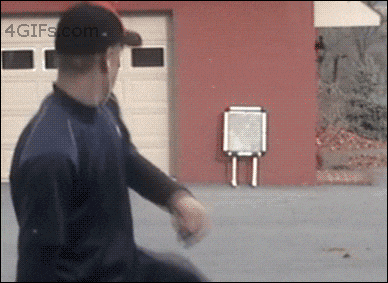The Magnus Effect
By Derek Teel
For Physics 211x Fall 2016
Instructor: David Newman

By Derek Teel
For Physics 211x Fall 2016
Instructor: David Newman
Introduction :
Have you ever wondered why a ping pong ball behaves differently if you spin it before hitting it? Or maybe how a soccer ball curves when hit a certain way, or how an American football flies straight when a spin is added to it. I first noticed this effect when I was watching skilled table tennis players using their whole body to spin the ball. But why? Why do they use so much effort to change the spin? Well, in table tennis and a surprising amount of other sports spin is crucial in controlling the state of the game and making players behave how you want them to so you can have greater odds of victory.
Have you ever wondered why a ping pong ball behaves differently if you spin it before hitting it? Or maybe how a soccer ball curves when hit a certain way, or how an American football flies straight when a spin is added to it. I first noticed this effect when I was watching skilled table tennis players using their whole body to spin the ball. But why? Why do they use so much effort to change the spin? Well, in table tennis and a surprising amount of other sports spin is crucial in controlling the state of the game and making players behave how you want them to so you can have greater odds of victory.
The effect
behind this phenomena is the called "The Magnus
Effect." I will provide various links
to help describe this effect contained in
that tab. The
Magnus effect
page will be describing the effect on various
sphereical objects and not entirely
focusing on the effect it has for
ping pong. Friction also plays a large part in
the trajectory
of a ping pong ball upon impact. It can change
speed and even
direction upon hitting the paddle or table.
For example
top spin sends the ball down into the table and
upon hitting the table it speeds up
much like how a car
accelerates forwards using friction
and the rotation of the
Photo
Credit: http://fuckyeahphysica.tumblr.com/
tires.
contained in
that tab. The
Magnus effect
page will be describing the effect on various
sphereical objects and not entirely
focusing on the effect it has for
ping pong. Friction also plays a large part in
the trajectory
of a ping pong ball upon impact. It can change
speed and even
direction upon hitting the paddle or table.
For example
top spin sends the ball down into the table and
upon hitting the table it speeds up
much like how a car
accelerates forwards using friction
and the rotation of the
Photo
Credit: http://fuckyeahphysica.tumblr.com/
tires.
 contained in
that tab. The
Magnus effect
page will be describing the effect on various
sphereical objects and not entirely
focusing on the effect it has for
ping pong. Friction also plays a large part in
the trajectory
of a ping pong ball upon impact. It can change
speed and even
direction upon hitting the paddle or table.
For example
top spin sends the ball down into the table and
upon hitting the table it speeds up
much like how a car
accelerates forwards using friction
and the rotation of the
Photo
Credit: http://fuckyeahphysica.tumblr.com/
tires.
contained in
that tab. The
Magnus effect
page will be describing the effect on various
sphereical objects and not entirely
focusing on the effect it has for
ping pong. Friction also plays a large part in
the trajectory
of a ping pong ball upon impact. It can change
speed and even
direction upon hitting the paddle or table.
For example
top spin sends the ball down into the table and
upon hitting the table it speeds up
much like how a car
accelerates forwards using friction
and the rotation of the
Photo
Credit: http://fuckyeahphysica.tumblr.com/
tires. To the right
is a picture describing the motion of the ping pong
ball with the application of top spin. Notice how
through the entirety of (1) the ball is
basically carried by the force applied from the
paddle. Then from (2)-(3) the spin of the
ball starts to impact the direction of the ball. As
the ball progresses further right the ball dives down
into the table and upon hitting it (3) its
spin takes a different effect. Instead
of directing the ball downward in the air
it
Photo
Credit: goes to https://en.wikipedia.org/wiki/Table_tennis
produces friction with the table and propels the ball
forward. Notice how at (4) the opponent angles
their paddle down to counter the spin of the ball.
Upon hitting the ball with the downward angle the ball
changes direction and goes up. If you think about it
the ball still has forward spin from the original hit,
so when the ball hits the opponents paddle it wants to
continue forwards, which would be upwards from the
angle of the paddle.
Now that we have some background what the magnus effect looks like, lets see how it works.
Now that we have some background what the magnus effect looks like, lets see how it works.